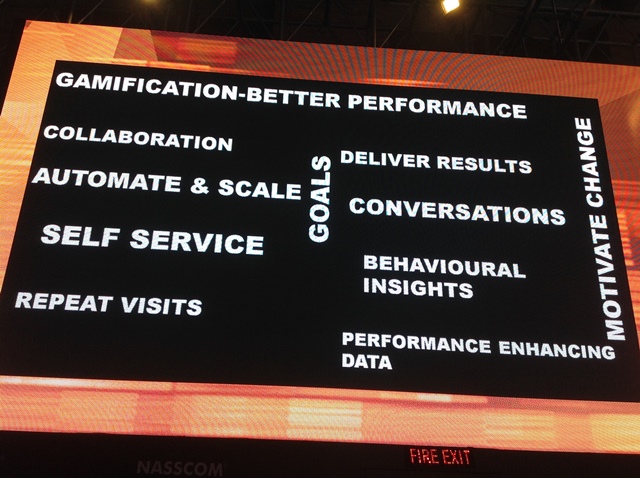Mumbai, 11 Feb: Gamification is not a new term, and we know that it means the application of the typical elements of game playing (point scoring, competition, strategy, tactic, rules of play) to other areas of activity in business, such as training or customer engagement. On the second day of Nasscom India Leadership Forum 2016 (NILF), Rajat Paharia, Founder of Bunchball (also regarded as the father of gamification) gave a new definition to the term ‘gamification’. He used it in the context of Big Data.
“When you think of gamification of business it usually means improving productivity. Things that you associate with the workplace. Gamification is about motivating better performance from your employees and driving ROI for your business. The way to do that is to harness the big data that your customers, partners, and your employees are generating — as they interact with various technology enabled systems,” said Paharia.
Everyone is generating more data today, since we are more connected than ever before — and our lives are being impacted by technology. And the volume of data that we generate is going up exponentially. Paharia contended that businesses are not harnessing this data properly for customer and employee engagement. That data is just lost “into the ether” as he puts it.
He gave the example of the GOQii wellness band.
“It measure your steps and sends that data back to the app. But that data is also linked to wellness goals that you want to accomplish. So it’s not data that’s lost to the ether,” he said. “And this is driving behaviour. It is making me more conscious (about health) and making me more active.”
He said businesses were using specialised applications — SAP ERP, Oracle Database, Salesforce CRM — and the data from these systems was very structured.
“You can now take that (structured) data and use it to reward and incentivise. The phrase to describe this is ‘performance enhancing data'”, he said.
Sales people are incentivised based on the targets they achieve. But Paharia feels that sales executives can also be motivated in other ways so that they add value to the business. They can share their successes with peers, for instance, when they win a big deal.
Contact centres benchmark on metrics like customer satisfaction scores, first call solution, onboarding & training. Internally, applications like Successfactors, Chatter, Jive help people become more effective in steering best practices and sharing knowledge. But gamification can help employees become more engaged in training, for example.
“Companies like Coca-Cola, Burberry and Nike are integrating these technologies into their next generation digital loyalty programs. It looks at all the different behaviors around the brand, and it can actually add value. At the end of the day, everybody is looking at business outcomes and results. Traditional loyalty programs could not capture what customers were saying about the brand on social media. But the loyalty 3.0 system can capture all these things. With employee performance being boosted, companies can see as much as 20 percent increase in top line revenue. Onboarding for new employees is reduced from weeks to hours.”
During his presentation Paharia showed a couple of examples of companies that have actually used gamification to increase efficiencies, customer engagement and to reduce costs.
He said that the key thing was for people to “want to do things”, by incentivising and motivating — and that drives productivity.
—————————————————————————————————————————————

